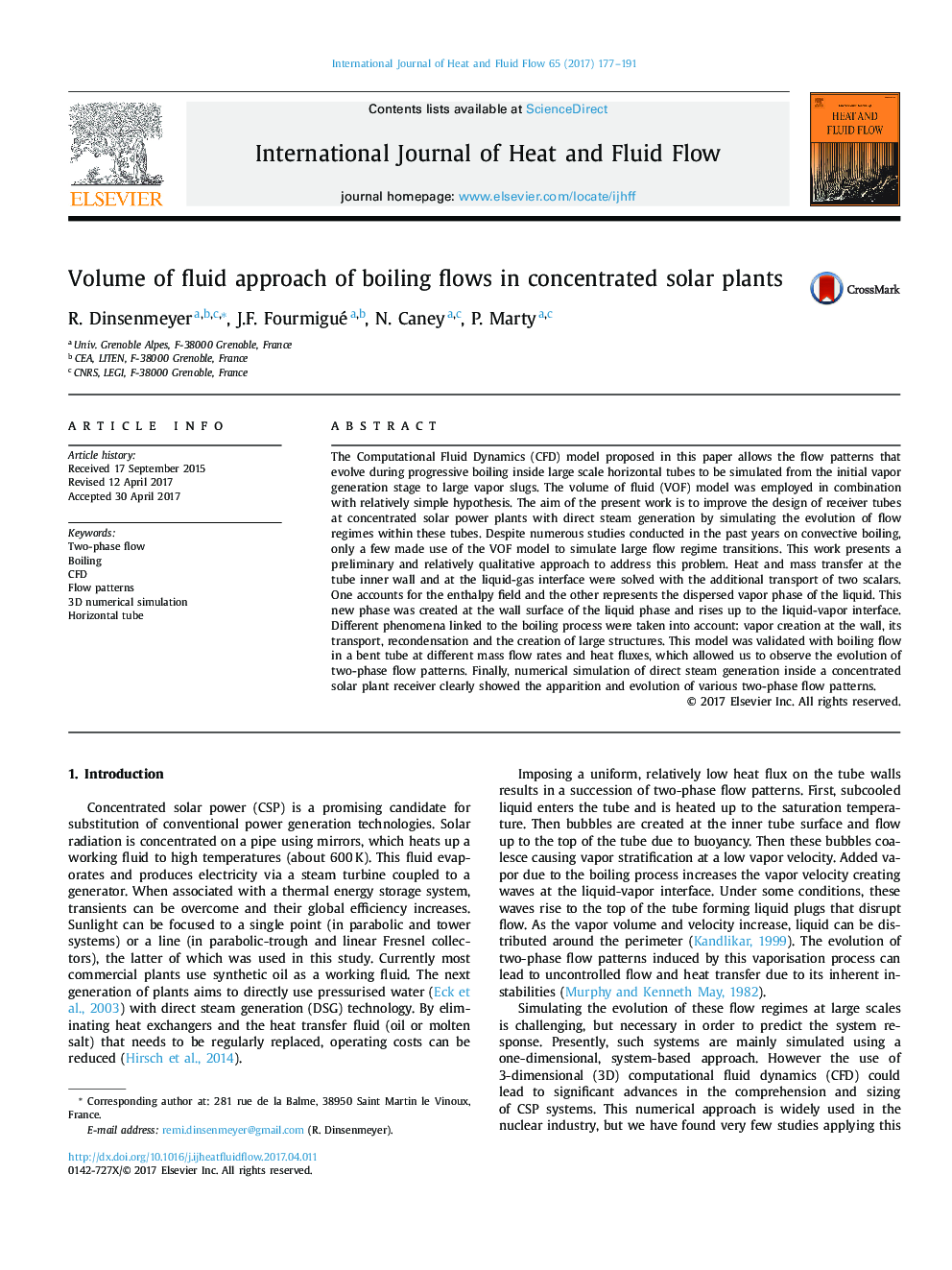| Article ID | Journal | Published Year | Pages | File Type |
|---|---|---|---|---|
| 4993126 | International Journal of Heat and Fluid Flow | 2017 | 15 Pages |
Abstract
The Computational Fluid Dynamics (CFD) model proposed in this paper allows the flow patterns that evolve during progressive boiling inside large scale horizontal tubes to be simulated from the initial vapor generation stage to large vapor slugs. The volume of fluid (VOF) model was employed in combination with relatively simple hypothesis. The aim of the present work is to improve the design of receiver tubes at concentrated solar power plants with direct steam generation by simulating the evolution of flow regimes within these tubes. Despite numerous studies conducted in the past years on convective boiling, only a few made use of the VOF model to simulate large flow regime transitions. This work presents a preliminary and relatively qualitative approach to address this problem. Heat and mass transfer at the tube inner wall and at the liquid-gas interface were solved with the additional transport of two scalars. One accounts for the enthalpy field and the other represents the dispersed vapor phase of the liquid. This new phase was created at the wall surface of the liquid phase and rises up to the liquid-vapor interface. Different phenomena linked to the boiling process were taken into account: vapor creation at the wall, its transport, recondensation and the creation of large structures. This model was validated with boiling flow in a bent tube at different mass flow rates and heat fluxes, which allowed us to observe the evolution of two-phase flow patterns. Finally, numerical simulation of direct steam generation inside a concentrated solar plant receiver clearly showed the apparition and evolution of various two-phase flow patterns.
Related Topics
Physical Sciences and Engineering
Chemical Engineering
Fluid Flow and Transfer Processes
Authors
R. Dinsenmeyer, J.F. Fourmigué, N. Caney, P. Marty,
